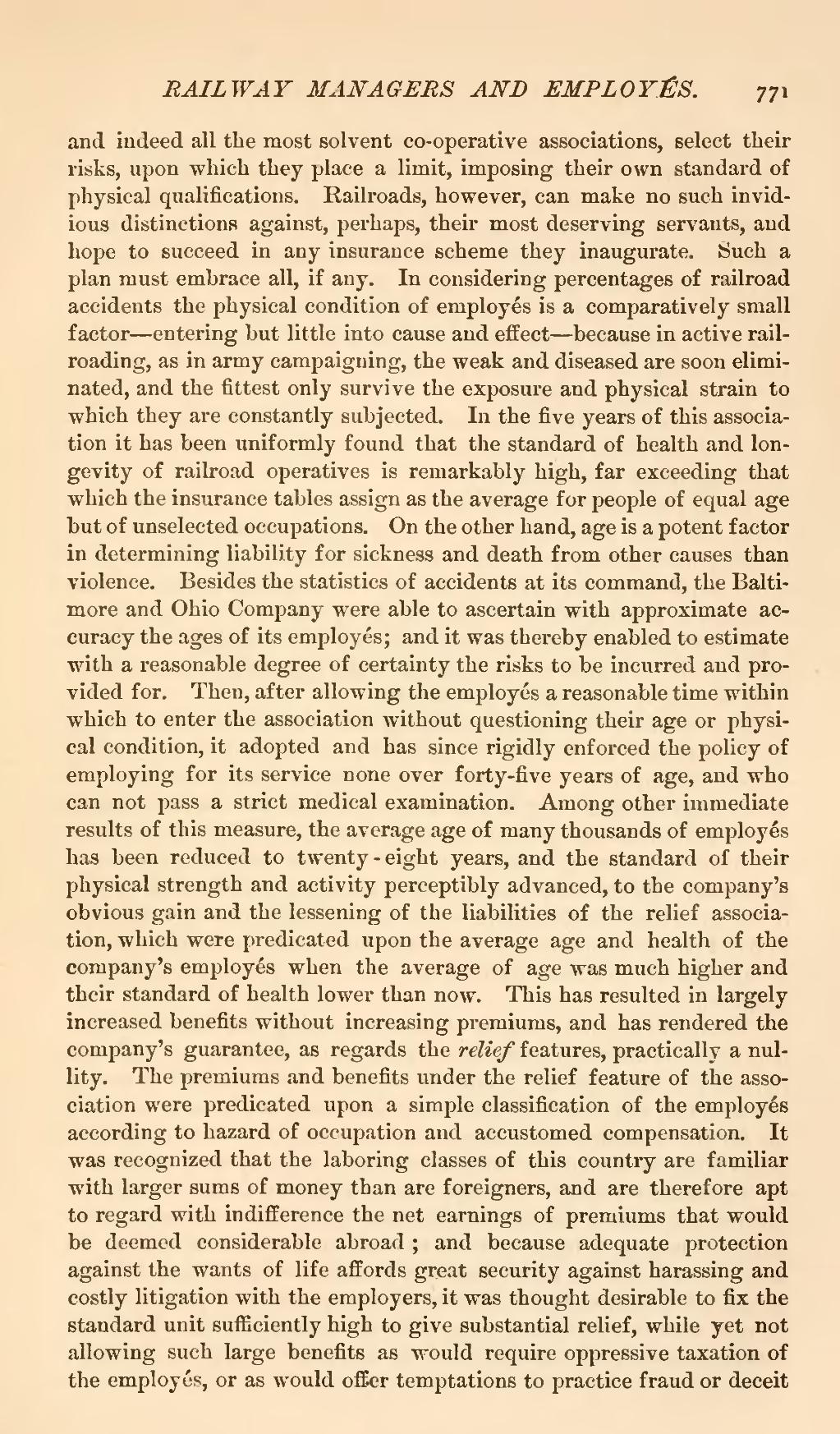and indeed all the most solvent co-operative associations, select their risks, upon which they place a limit, imposing their own standard of physical qualifications. Railroads, however, can make no such invidious distinctions against, perhaps, their most deserving servants, and hope to succeed in any insurance scheme they inaugurate. Such a plan must embrace all, if any. In considering percentages of railroad accidents the physical condition of employés is a comparatively small factor—entering but little into cause and effect—because in active railroading, as in army campaigning, the weak and diseased are soon eliminated, and the fittest only survive the exposure and physical strain to which they are constantly subjected. In the five years of this association it has been uniformly found that the standard of health and longevity of railroad operatives is remarkably high, far exceeding that which the insurance tables assign as the average for people of equal age but of unselected occupations. On the other hand, age is a potent factor in determining liability for sickness and death from other causes than violence. Besides the statistics of accidents at its command, the Baltimore and Ohio Company were able to ascertain with approximate accuracy the ages of its employés; and it was thereby enabled to estimate with a reasonable degree of certainty the risks to be incurred and provided for. Then, after allowing the employés a reasonable time within which to enter the association without questioning their age or physical condition, it adopted and has since rigidly enforced the policy of employing for its service none over forty-five years of age, and who can not pass a strict medical examination. Among other immediate results of this measure, the average age of many thousands of employés has been reduced to twenty-eight years, and the standard of their physical strength and activity perceptibly advanced, to the company's obvious gain and the lessening of the liabilities of the relief association, which were predicated upon the average age and health of the company's employés when the average of age was much higher and their standard of health lower than now. This has resulted in largely increased benefits without increasing premiums, and has rendered the company's guarantee, as regards the relief features, practically a nullity. The premiums and benefits under the relief feature of the association were predicated upon a simple classification of the employés according to hazard of occupation and accustomed compensation. It was recognized that the laboring classes of this country are familiar with larger sums of money than are foreigners, and are therefore apt to regard with indifference the net earnings of premiums that would be deemed considerable abroad; and because adequate protection against the wants of life affords great security against harassing and costly litigation with the employers, it was thought desirable to fix the standard unit sufficiently high to give substantial relief, while yet not allowing such large benefits as would require oppressive taxation of the employés, or as would offer temptations to practice fraud or deceit
